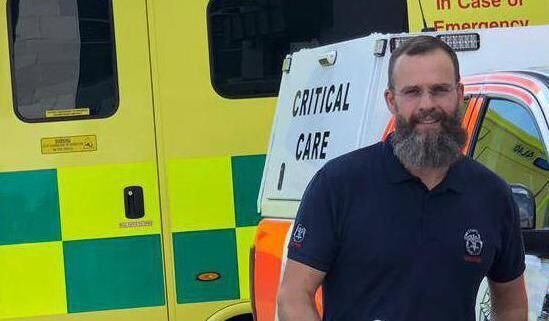Ambulance service in West Cork in danger of 'imminent collapse'

Due to overcrowding in hospitals such as CUH, ambulances are often tied up for hours waiting outside the hospital. Picture: Larry Cummins
The lack of ambulance cover in West Cork is putting lives in danger, a TD has told the Dáil.
Michael Collins raised the issue with the Taoiseach, citing the "imminent collapse of the ambulance service in West Cork".
Although there are five ambulance bases in West Cork, in Clonakilty, Castletownbere, Bantry, Skibbereen, and Macroom, the Independent TD said that, in reality, there are at best two part-time ambulances.
He said that speaking to ambulance staff, he was informed that the Clonakilty ambulance spends most of its time in Cork city, while the Castletownbere vehicle is routinely tied up serving parts of Kerry.
"This level of skeleton service would not be tolerated in any other area of the country and it will not be tolerated here," Mr Collins said, especially given the geographical size of the area.
This was echoed by Dr Jason van der Velde, a pre-hospital emergency medicine and critical care retrieval physician at Cork University Hospital (CUH), who said that while there are issues in ambulance services around the country, it is felt more acutely in West Cork as people are so far from hospitals.

Due to overcrowding in hospitals such as CUH, ambulances are often tied up for hours waiting outside the hospital until there is room in the emergency department (ED) to transfer the patient. This means that the ambulance is essentially out of service until the transfer is complete.
There has been some progress made in this area in the past two weeks, according to Dr van der Velde.
The dramatic improvement in turnaround times is down to a strategy that if the acute phase of care — initial diagnosis and management, the stabilisation, and the referral to an inpatient specialty — is complete, then rather than leave that patient on a corridor in a crowded ED, they are moved to a corridor inside the hospital.
"We have gone from ambulance turnaround delays of anything up to half a day to a day, down to 20 minutes," he said.
On the flip side of this is that the strategy has drastically increased the workload of already overburdened inpatient ward teams, particularly nurses.
However, Dr van der Velde said it is about identifying where there is less risk.
There is also concern that some people, knowing how stretched services are, will opt not to call for an ambulance at all despite being in need of care and as a result, will stay in pain and suffer harm.
Dr van der Velde pointed to the situation in the UK where the Association of Ambulance Chief Executives estimates 57,000 people experienced "potential harm" as a result of ambulance delays.













